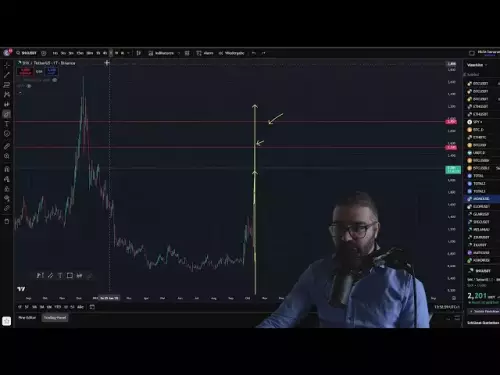-
 bitcoin
bitcoin $115692.075601 USD
5.13% -
 ethereum
ethereum $4162.931611 USD
11.68% -
 bnb
bnb $1310.063287 USD
17.56% -
 tether
tether $1.000983 USD
0.00% -
 xrp
xrp $2.534505 USD
8.16% -
 solana
solana $198.235737 USD
13.49% -
 usd-coin
usd-coin $1.000236 USD
0.02% -
 dogecoin
dogecoin $0.207352 USD
12.89% -
 tron
tron $0.323043 USD
3.62% -
 cardano
cardano $0.701559 USD
11.88% -
 hyperliquid
hyperliquid $39.924597 USD
8.30% -
 chainlink
chainlink $18.934457 USD
11.56% -
 ethena-usde
ethena-usde $1.000552 USD
0.02% -
 stellar
stellar $0.340575 USD
7.05% -
 bitcoin-cash
bitcoin-cash $545.011757 USD
8.86%
KAS miner keeps restarting fix
The KAS miner may restart unexpectedly due to insufficient RAM, overheating, incorrect configuration, power issues, or outdated drivers—monitor system resources and update software to ensure stability.
Jul 25, 2025 at 10:22 pm
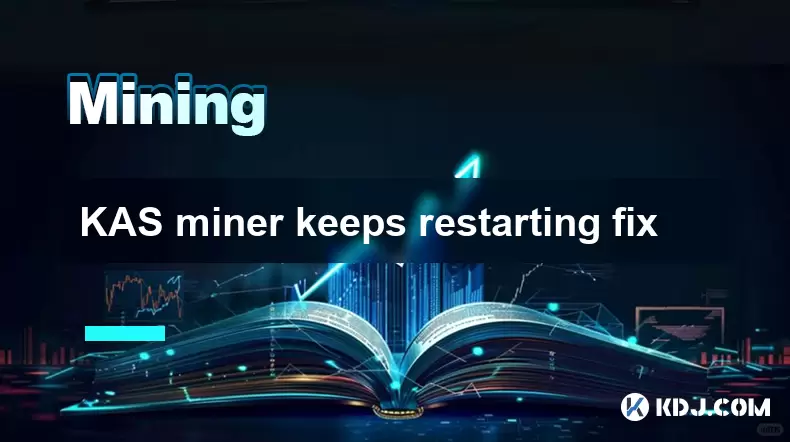
Understanding Why KAS Miner Restarts Unexpectedly
The KAS miner is a popular tool used to mine KASPA, a blockDAG-based cryptocurrency designed for high throughput and fast transaction processing. However, users often report that their KAS miner keeps restarting, disrupting mining operations and reducing efficiency. This behavior can stem from multiple sources, including hardware limitations, software misconfiguration, power supply instability, or network-related issues. Identifying the root cause is essential to applying the correct fix.
One common reason for repeated restarts is insufficient system memory (RAM). KASPA mining, especially when using the kHeavyHash algorithm, is memory-intensive. If the system runs out of RAM, the operating system may terminate the miner process to free up resources, causing it to restart. Monitoring RAM usage via tools like Task Manager (Windows) or htop (Linux) can help detect memory exhaustion.
Another potential cause is overheating. Mining generates substantial heat, and if cooling is inadequate, the GPU or CPU may throttle or shut down to prevent damage. This triggers a restart of the mining software. Ensuring proper ventilation, cleaning dust from fans, and monitoring temperatures using tools like HWMonitor or MSI Afterburner is crucial.
Configuring the KAS Miner Correctly
Improper configuration is a frequent culprit behind the KAS miner keeps restarting issue. The configuration file, usually named config.txt or passed via command-line arguments, must be set up precisely. Errors in parameters such as threads, device selection, or API settings can cause crashes.
- Ensure the number of threads does not exceed the available CPU threads. Over-allocating threads can overload the system.
- Verify that the GPU device index is correctly specified, especially in multi-GPU setups. Use the
--list_devicesflag to identify correct IDs. - Set the worksize appropriately. Too high a worksize can cause GPU memory overflow, leading to restarts. A recommended starting point is
--worksize 600for most GPUs. - Disable hyper-threading if stability issues persist, as some miners perform better with physical cores only.
For example, a stable command might look like:
./kasminer --device 0 --worksize 600 --threads 16 --url stratum+tcp://pool.kaspa.org:1110 --user YOUR_WALLET_ADDRESSUsing batch scripts (Windows) or shell scripts (Linux) to launch the miner ensures consistent parameter usage and helps avoid typos.
Addressing Power and Thermal Throttling
Power delivery issues can force the miner to restart. Power Supply Units (PSUs) that are underpowered or of low quality may not sustain the load during peak mining activity, causing voltage drops and system resets. A PSU should provide at least 1.5x the total power draw of all components.
- Check if the GPU power limit is set too high in overclocking software like MSI Afterburner. Reducing power by 10–15% can improve stability.
- Enable 'Prefer Maximum Performance' in NVIDIA's power management settings via the NVIDIA Control Panel.
- On Linux, use
nvidia-smi -pl [wattage]to set a safe power limit.
Thermal throttling occurs when GPU or CPU temperatures exceed safe thresholds. Most modern GPUs throttle performance at around 90–95°C, but sustained high heat can trigger driver crashes or system reboots.
- Install additional case fans or consider open-air mining rigs for better airflow.
- Use thermal paste refresh on GPUs and CPUs if temperatures are abnormally high.
- Monitor thermal trends over time to identify patterns linked to restarts.
Updating Drivers and Miner Software
Outdated GPU drivers or miner binaries can lead to instability. Older drivers may lack optimizations for the kHeavyHash algorithm or contain bugs that cause crashes under load.
- For NVIDIA GPUs, use driver version 535 or higher.
- For AMD GPUs, ensure Adrenalin 23.5.1 or newer is installed.
- Download the latest KAS miner release from official repositories like GitHub or trusted community sources.
To update the miner:
- Navigate to the miner’s installation directory.
- Backup the current
config.txtor startup script. - Replace the old executable with the new version.
- Reapply configurations and test stability.
Running outdated software may also expose the system to security vulnerabilities or incompatibility with pool protocols, both of which can result in disconnections and restarts.
Optimizing System Resources and Background Processes
Background applications can interfere with mining stability. Programs like antivirus software, automatic updates, or resource-heavy apps may consume CPU, RAM, or disk I/O, leading to miner crashes.
- Exclude the miner folder from real-time antivirus scanning.
- Disable Windows Update during mining sessions to prevent unexpected reboots.
- Use Process Lasso or systemd (Linux) to set the miner’s process priority to 'High' or 'Realtime'.
Virtual memory (pagefile) settings also impact performance. If the system runs out of virtual memory, processes may be terminated.
- Set a custom pagefile size (e.g., 16GB initial, 32GB maximum) on Windows.
- On Linux, increase swap space using
fallocateandmkswapif RAM is limited.
Ensure the operating system is optimized for performance:
- Disable visual effects in Windows.
- Use a minimal Linux distribution like Ubuntu Server or Debian for dedicated mining rigs.
Monitoring and Logging for Troubleshooting
Enabling detailed logging helps identify the exact moment and cause of restarts. Most KAS miners support a --log_file parameter to write output to a file.
- Add
--log_file kaspa_log.txtto your startup command. - Check the log for error messages like 'Out of memory', 'GPU timeout', or 'Connection lost'.
- Use
tail -f kaspa_log.txton Linux to monitor logs in real time.
Third-party monitoring tools like Grafana + Prometheus or Kibana + Logstash can visualize logs and system metrics over time, making it easier to correlate restarts with specific events.
Set up automatic restart scripts as a temporary workaround:
- On Windows, use a
.batfile with a loop::loopkasminer.exe --your-argstimeout /t 5goto loop - On Linux, use a
whileloop in a bash script:while true; do ./kasminer --your-args sleep 5done
This ensures the miner resumes quickly after a crash, though it does not fix the underlying issue.
FAQs
Why does my KAS miner crash immediately after starting?Immediate crashes are often due to missing runtime libraries or incorrect GPU drivers. Install Visual C++ Redistributables on Windows and ensure your GPU driver supports OpenCL or CUDA. Run the miner from the command line to see error messages.
Can antivirus software cause KAS miner restarts?Yes, antivirus programs may flag the miner as suspicious and terminate it. Add the miner’s directory to the antivirus exclusion list and disable real-time scanning for that folder.
How do I know if my PSU is causing restarts?Signs of PSU issues include random system shutdowns, burning smells, or reboots under load. Use a PSU tester or temporarily replace it with a known-good unit to confirm.
Is it safe to run the KAS miner 24/7?Yes, but only if temperatures are controlled, power is stable, and hardware is rated for continuous use. Regularly monitor system health to prevent long-term damage.
Disclaimer:info@kdj.com
The information provided is not trading advice. kdj.com does not assume any responsibility for any investments made based on the information provided in this article. Cryptocurrencies are highly volatile and it is highly recommended that you invest with caution after thorough research!
If you believe that the content used on this website infringes your copyright, please contact us immediately (info@kdj.com) and we will delete it promptly.
- XRP Price Prediction: Weekend Rollercoaster or Rally?
- 2025-10-12 08:45:16
- Bittensor (TAO): Super Bullish Signals Point to Potential 2x Rally
- 2025-10-11 10:25:12
- Silver Price Correction: Navigating the Dip & Identifying Key SEO Keywords
- 2025-10-11 10:25:12
- Decoding Crypto Trends: Bittensor's Bull Run, Cardano's Dip, and LivLive's Presale Buzz in 'Uptober 2025'
- 2025-10-12 08:45:16
- MoonBull: The Crypto Meme Coin Promising 1000x Gains?
- 2025-10-11 10:30:01
- Crypto Payroll Revolution: Stablecoins, Altcoins, and the Future of Salary Payments
- 2025-10-11 10:30:01
Related knowledge
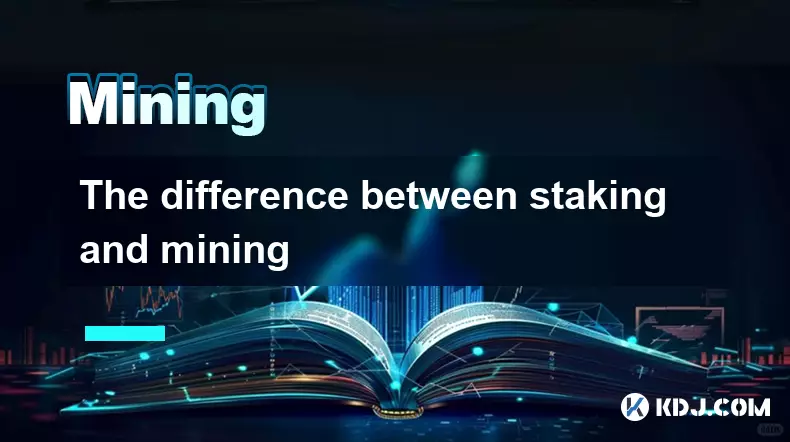
The difference between staking and mining
Sep 24,2025 at 05:18am
Understanding Staking in the Cryptocurrency Ecosystem1. Staking involves holding funds in a cryptocurrency wallet to support the operations of a block...

How to participate in testnet mining?
Sep 22,2025 at 09:18am
Understanding Testnet Mining in the Crypto Ecosystem1. Testnet mining is a method used by blockchain developers to simulate real-world conditions on a...

How to dispose of abandoned mining machines?
Sep 19,2025 at 08:19pm
Assessing the Condition of Abandoned Mining Rigs1. Begin by inspecting each mining machine for visible damage, corrosion, or missing components. Machi...

How to identify high-quality mining pools?
Sep 21,2025 at 03:19pm
Reputation and Track Record1. A mining pool’s reputation is built over time through consistent performance and transparency. Pools that have operated ...
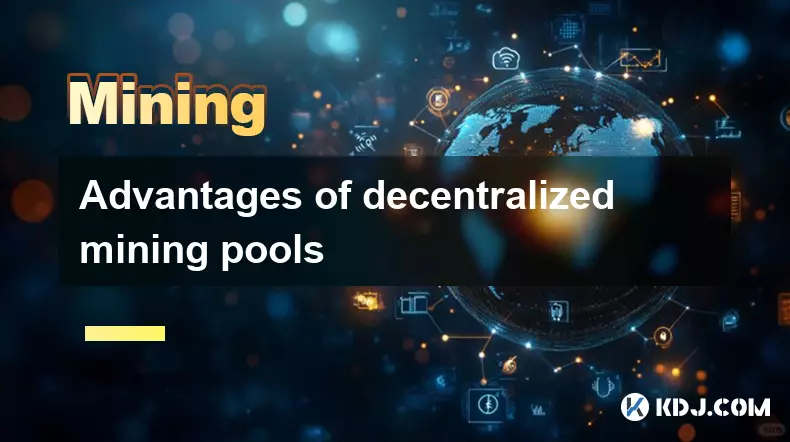
Advantages of decentralized mining pools
Sep 20,2025 at 04:36pm
Enhanced Security and Resistance to Censorship1. Decentralized mining pools operate on blockchain-based smart contracts, eliminating the need for a ce...
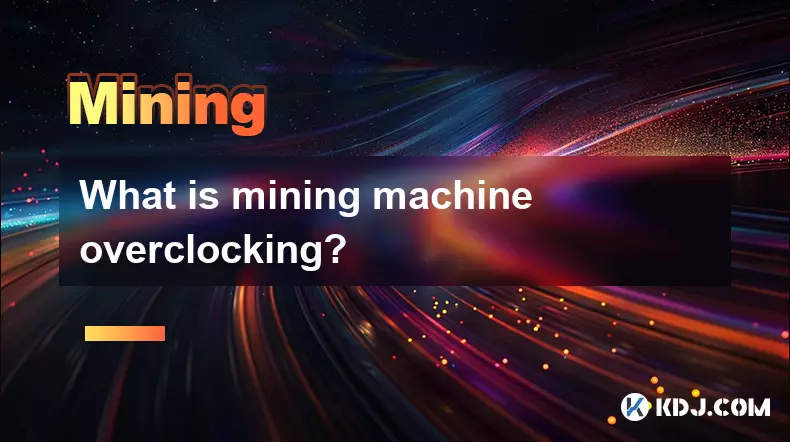
What is mining machine overclocking?
Sep 21,2025 at 07:19pm
Understanding Mining Machine Overclocking1. Mining machine overclocking refers to the process of increasing the operating frequency of a cryptocurrenc...

The difference between staking and mining
Sep 24,2025 at 05:18am
Understanding Staking in the Cryptocurrency Ecosystem1. Staking involves holding funds in a cryptocurrency wallet to support the operations of a block...

How to participate in testnet mining?
Sep 22,2025 at 09:18am
Understanding Testnet Mining in the Crypto Ecosystem1. Testnet mining is a method used by blockchain developers to simulate real-world conditions on a...

How to dispose of abandoned mining machines?
Sep 19,2025 at 08:19pm
Assessing the Condition of Abandoned Mining Rigs1. Begin by inspecting each mining machine for visible damage, corrosion, or missing components. Machi...

How to identify high-quality mining pools?
Sep 21,2025 at 03:19pm
Reputation and Track Record1. A mining pool’s reputation is built over time through consistent performance and transparency. Pools that have operated ...

Advantages of decentralized mining pools
Sep 20,2025 at 04:36pm
Enhanced Security and Resistance to Censorship1. Decentralized mining pools operate on blockchain-based smart contracts, eliminating the need for a ce...

What is mining machine overclocking?
Sep 21,2025 at 07:19pm
Understanding Mining Machine Overclocking1. Mining machine overclocking refers to the process of increasing the operating frequency of a cryptocurrenc...
See all articles





















